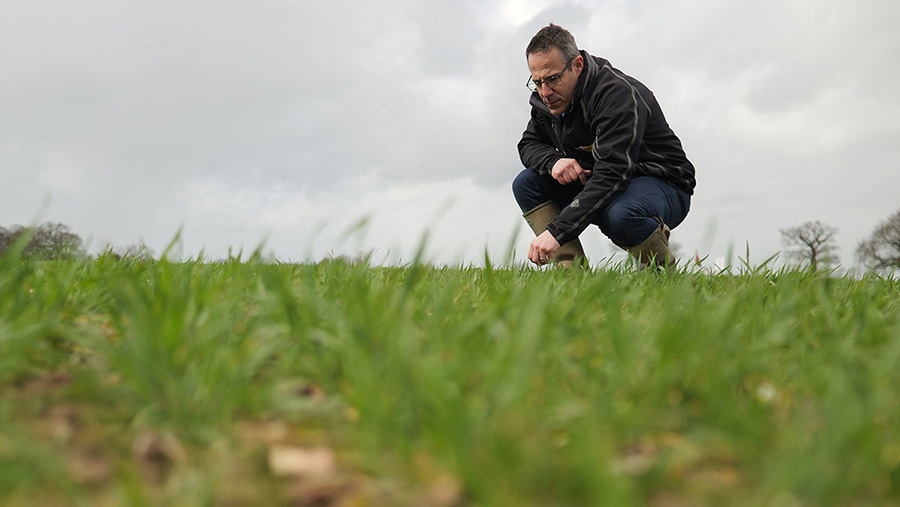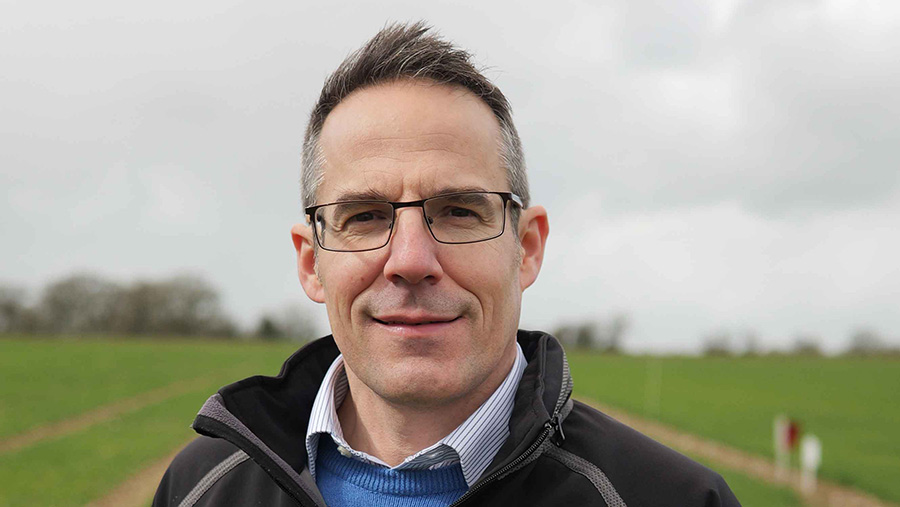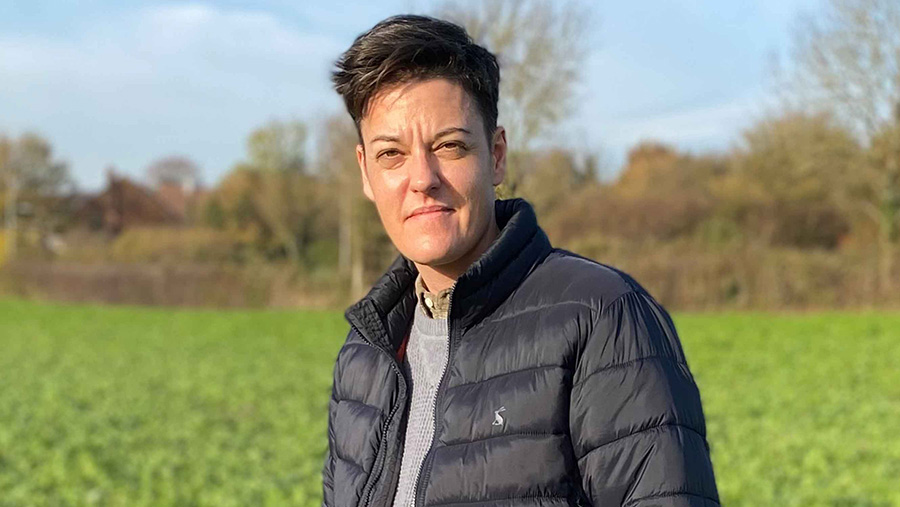Advertiser content
Frontier investigates ‘greener’ fertilisers
 Edward Downing Investigating greener fertilisers © Frontier
Edward Downing Investigating greener fertilisers © Frontier Whether enhancing nutrient use efficiency or reducing emissions associated with production, several technologies and products are being developed to make fertiliser more sustainable.
At Frontier Agriculture, national crop nutrition technical manager, Edward Downing and lead on sustainability, Jim Stotzka, look at what’s available now and what else is being explored.
“The common aim across these ‘greener’ products is to reduce the environmental impact of the fertiliser used to grow a crop,” explains Edward. “Although most involve nitrogen as that’s the biggest burden for carbon emissions, we’re also looking at some P&K products.
“Different types of products can reduce emissions in different ways, so with that comes the need to adopt different approaches.”
One product already available is Nutrino Pro, a crop safe second-generation foliar product which also contains biostimulants to improve nitrogen uptake and assimilation by the plant.
“It works very well in crops such as oilseed rape and maize by extending canopy duration to improve crop yield and quality,” says Edward. “It allows you to replace a proportion of soil-applied nitrogen for the same crop performance.”
Organo-mineral products are another option. These take existing materials, such as poultry manure or digestate, and process and fortify them into spreadable pellets so they can be accurately applied like normal mineral fertiliser, but with a significantly lower carbon footprint.
“We tested two new products last year and they looked very promising, although higher usage rates due to a lower nutrient content need to be considered,” adds Edward.

Edward Downing © Frontier
Microbial biostimulants, like BlueN, use endophytic bacteria to fix atmospheric nitrogen inside non-leguminous plants, so they could have a role to play in reducing N rates to support more sustainable crop nutrition too.
BlueN is currently in trials with Frontier, and findings so far show that it could have exciting potential.
“I’ve been working with microbial biostimulants for almost 10 years and BlueN is the most promising product I’ve encountered,” says Frontier lead on sustainability, Jim Stotzka.
“Finding a bacterium that can be sprayed on crops such as wheat and which fixes nitrogen in a field situation is something of a Holy Grail – the process is fraught with difficulties.”
With decades of academic research and more than 15 years spent trying to make the concept available, one of the reasons BlueN is interesting is that its bacterium (Methylobacterium symbioticum) is different from other products which have been investigated.
BlueN’s bacterium is motile, so when it is sprayed onto the plant canopy it moves across the leaf surface and enters the plant via the stomata. It then forms a symbiotic relationship with it, fixing atmospheric nitrogen into ammonium and then amino acids.
Unlike some other products, it colonises the entire plant and stays active for the duration of the crop’s life.
Frontier will trial BlueN this year to investigate its efficiency and if successful, the product may be available for growers’ own trials next year.
“If the product is effective then significant savings in applied nitrogen applications may be possible,” adds Jim.

Jim Stotzka © Frontier
Fertiliser manufacturers are also working to reduce the carbon footprint of conventional nitrogen production, with the ultimate aim of producing blue ammonia (where carbon emissions are captured) and green ammonia (where ammonia is produced from green hydrogen using renewable energy). “These developments are coming but are understandably a huge investment,” comments Edward.
“Finally, there are other biostimulants aimed at improving nitrogen assimilation and uptake, such as IntraCrop’s Status. These products can be used alongside any fertiliser product to improve nitrogen use efficiency and minimise the amount of fertiliser required. Going forward, we’ll have to use a combination of all these approaches.”
While demand for products with a lower environmental impact grows, Frontier is committed to trialling and testing them thoroughly to help farmers understand how they best fit into different crop production systems. “Ultimately, it’s vital to base adoption on sound trials and science,” Edward concludes.
Provided by
Frontier’s commitment to sustainability is woven into all of our operations and the work we do with farmers, suppliers and partners.
At the very heart of this is sustainable crop production; working with farmers to support long term, viable farming systems that increase the longevity of arable businesses, encourage high-quality food production and help our farmed landscape to become more resilient.
The implementation of a sustainable crop production system requires a holistic approach to overall farm management. What works on one farm may not always be right for another.
We have created a crop production sustainability model that covers seven focus areas: soil health, crop growth cycle, environmental management, compliance, carbon management, digital solutions and regenerative agriculture. By exploring the ways they are linked, we help farmers to take a considered, whole-farm approach to achieving sustainability objectives.
Find out more at frontierag.co.uk/sustainable-crop-production
